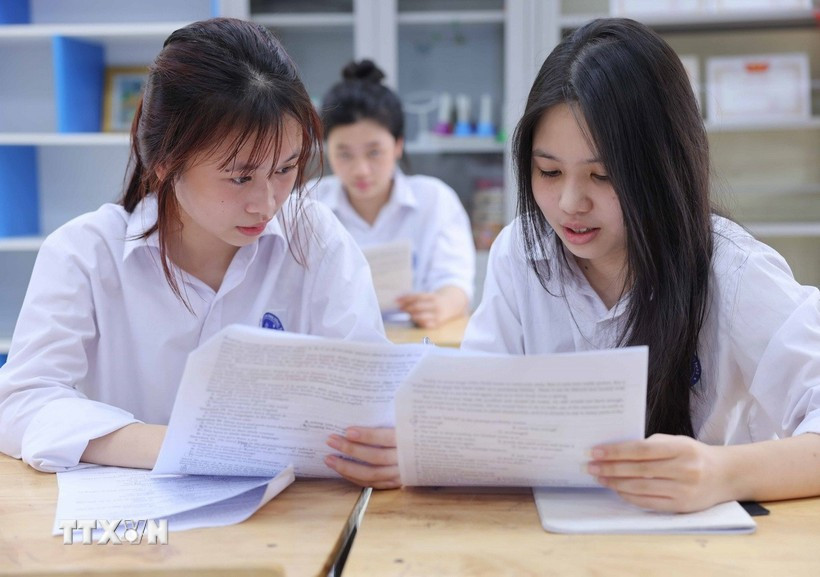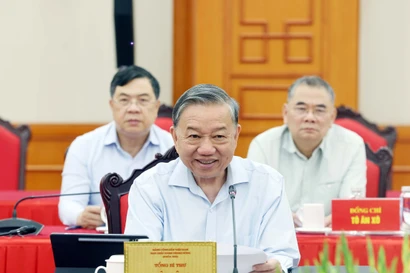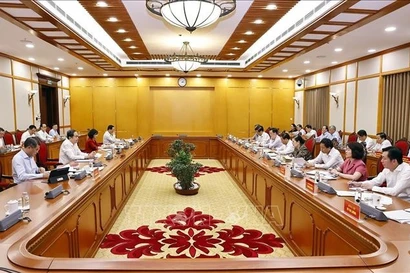
Hanoi (VNA) – The Politburo’s Resolution No.71-NQ/TW on breakthrough development in education and training forms a strategic tripod for rapid and sustainable growth alongside Resolutions No.57-NQ/TW and No.59-NQ/TW on breakthrough development in science – technology, innovation and national digital transformation, and international integration in the new situation.
Tripod strategy for a new era
Resolution No.71 was signed by Party General Secretary To Lam on August 22, following Resolutions No.57 and 59. All three documents share the spirit of “breakthrough” and require innovation in mindset. Resolution No.59 marks a historic turning in the nation’s international integration, identifying this as a strategic driver for the nation’s new era. Meanwhile, Resolution No.57 stresses the need to innovate law-making mindset to ensure management requirements and encourage innovation. Resolution No.71 highlights the significance of breakthroughs in resources, motives, and new space for education and training development, with the State playing a key role and public investment leading and attracting social resources for the modernisation of the education system.
Regarding "immediate actions needed" for international integration in the new phase, Party General Secretary To Lam demanded that new thinking and actions in international integration must be integrated into daily life. Accordingly, the awareness of harmonious, comprehensive, deep, and effective international integration is a major strategic orientation of the Party.

The specific objectives set by the Party leader in Resolutions No.57 and No.71 are closely interconnected, maintaining a mutually supportive relationship with Resolution 59's goals.
Resolution No.57 envisions Vietnam as a high-income and developed country by 2045 on the back of science – technology, innovation, and digital transformation, with the digital economy expected to contribute at least 50% to the nation’s GPD. The country eyes ranking among the world’s top 30 countries in innovation and digital transformation and having at least 10 globally competitive tech enterprises.
In the meantime, Resolution No.71 sets targets of building a modern, equal, and quality education system, placing Vietnam among the world's top 20 countries. High-quality human resources and sci-tech talent will become a driver and a key competitive advantage of the country. The resolution also aims for at least five higher education institutions to rank among the world's top 100 universities in various fields.
Concretising the two resolutions will enable the successful implementation of Resolution 59, ensuring Vietnam’s deep integration in science – technology, innovation, and education while capitalising on resources and favourable conditions to build an independent and resilient economy with rapid and sustainable development.
Boosting investment
Resolution No.71 acknowledges the education and training sector’s shortcomings such as insufficient access compared to advanced nations, stark disparities across regions, inadequate facilities, and underdeveloped higher and vocational education, which are sparked by limited investment and unsound regime and policies for educators.

To address these gaps, the Resolution underscores bold institutional reforms and strong investment in the sector. The state budget allocation for education must reach at least 20% of total expenditure, giving priority to universities. It calls for special and superior preferential policies for educators, raising professional allowances to at least 70% for teachers in general and preschool teachers and at least 30% for staff, and 100% for teachers in areas with particular difficulties, border regions, islands and ethnic minority inhabited localities.
Higher education and vocational institutions will be granted full autonomy regardless of financial status. Financial and investment mechanisms will be fundamentally restructured, while expanded financial aid and preferential credit policies will guarantee that no student drops out due to economic hardship.
The resolution also prioritises raising standards for educational facilities to meet regional and international benchmarks, securing land for new projects, and offering tax and land-use incentives for domestic educational institutions./.

